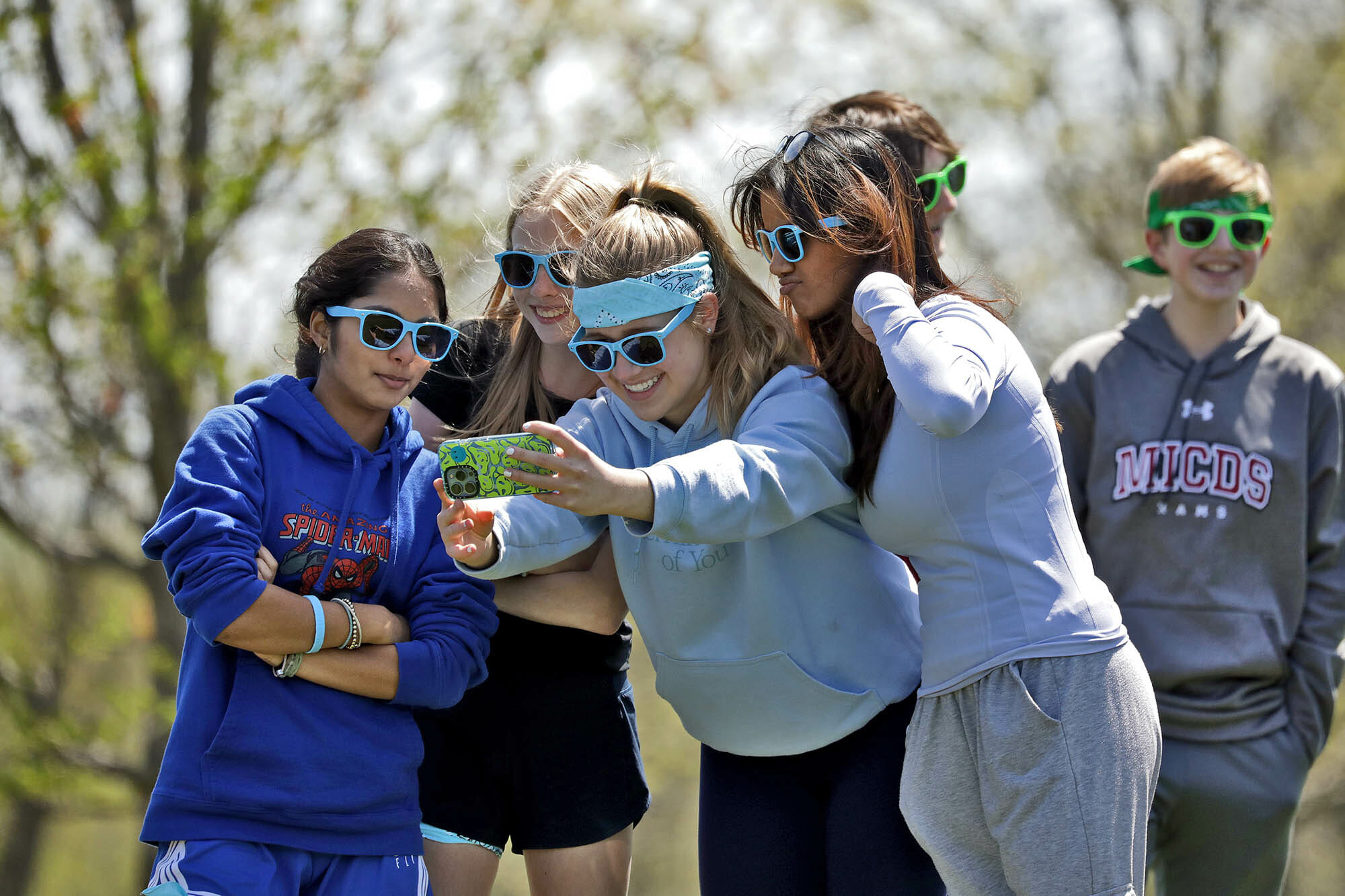On February 13, the CDC reported results of the 2021 Youth Risk Behavior Survey (YRBS), which is administered every two years to adolescents across the country. Among the most dispiriting findings was that 42% of high school students experienced periods of persistent sadness and hopelessness, up from 37% in 2019 and 32% in 2017. Insofar as a connection to digital technology use–especially phone use–is widely suspected in this trend, I decided to survey MICDS students in grades 7-12 about their own relationship with their screens.
To ascertain context, I began by reviewing YRBS high school data for Missouri from 2019, the most recent year for which a complete survey dataset is available, and there is much good news to report. Rates of television viewing, cigarette smoking, alcohol use, soft drink consumption, and impaired driving are all significantly diminished relative to 2009 levels.
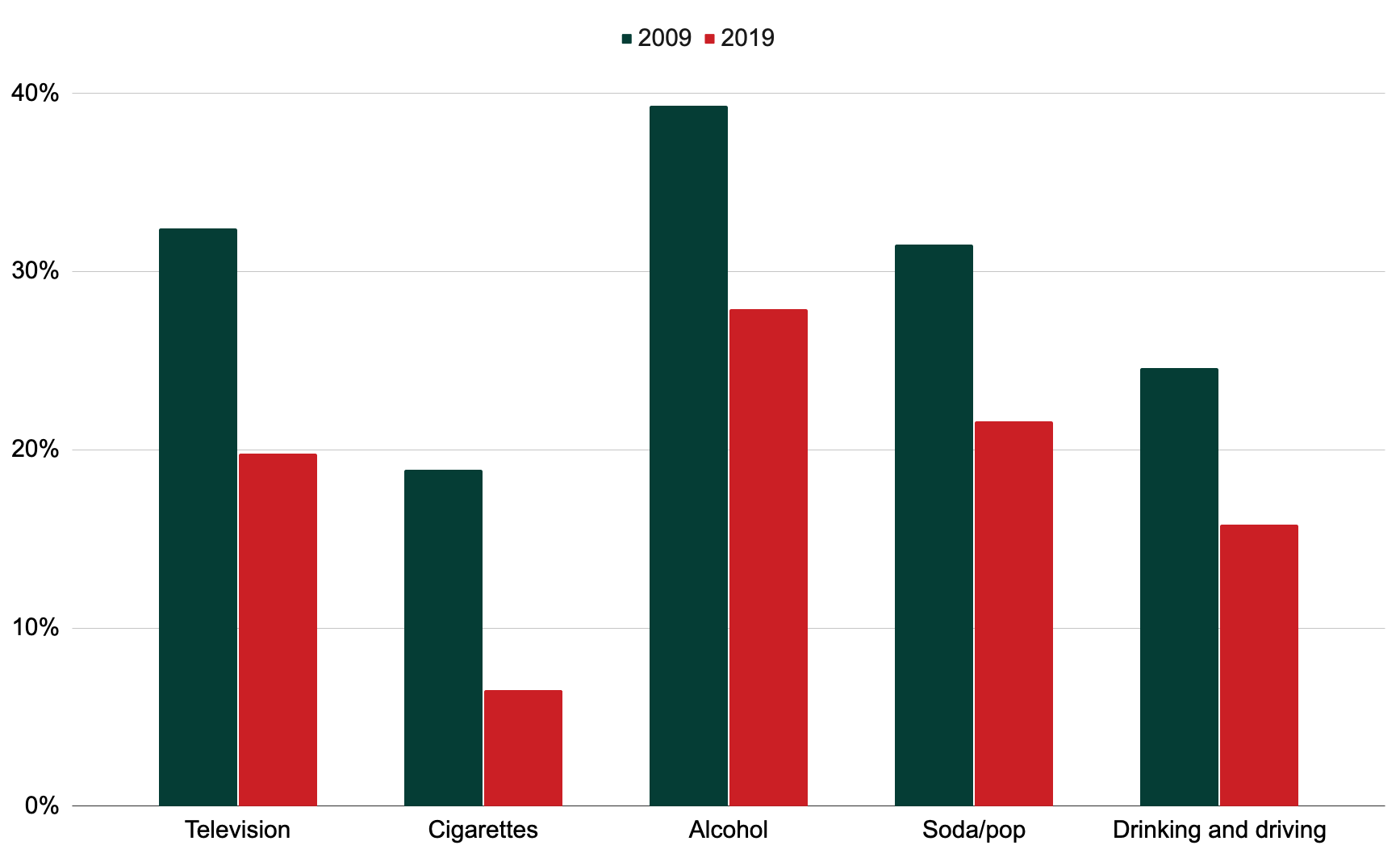
The data also depict physical and mental health indicators trending in the wrong direction, however, with increased instances of adolescent asthma and obesity in 2019 relative to 2009 and more widespread feelings of sadness or hopelessness that are consistent with, if not quite as alarming as, the 2021 national findings. Most pronounced, however, is the jump in the population of students who spend more than three hours per day on phones, computers, or video game consoles, from 23% to 43% of all Missouri high school students.
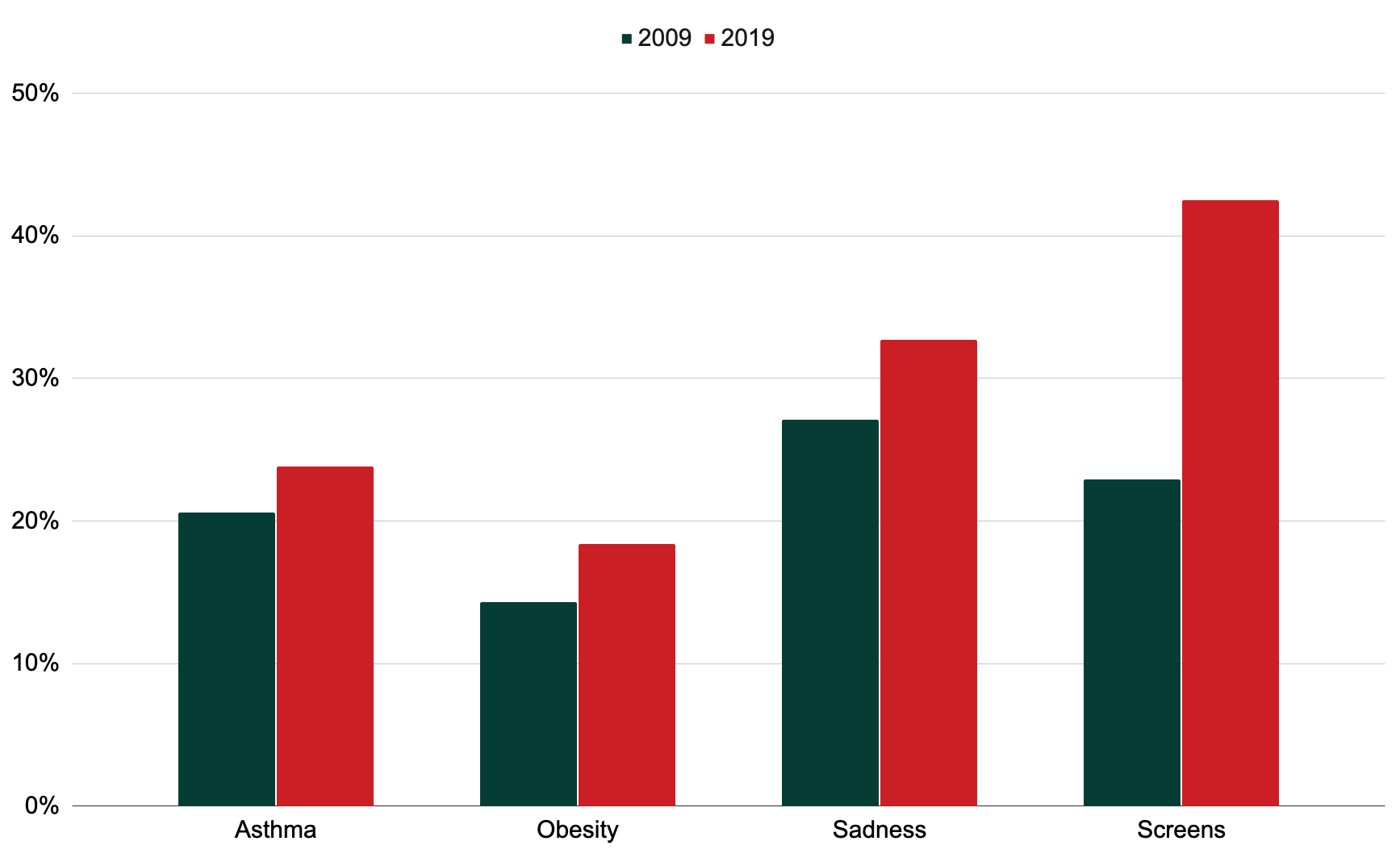
My survey of grades 7-12 this week, in which 183 students participated, was anonymous, voluntary, uncontrolled, and therefore decidedly unscientific, so it is in the hope that you will agree not to place an overabundance of faith in its results that I share them with you here. I began by asking students to provide their daily smartphone screen time totals from the last full week (February 19-25), after which I asked them to respond on a Likert scale (“strongly agree” to “strongly disagree”) to the statement “I spend too much time on my phone.” The results suggest that while average daily screen time increases by grade level, concern about smartphone overuse is relatively steady. Our seventh-grade students, who averaged about two hours per day on their phones that week, expressed only slightly less concern about their screen time than our eleventh-grade students, who averaged over five hours per day. Our students would appear to identify their relationship with their phone as a challenge from an early age, and yet its impact on their life only grows.
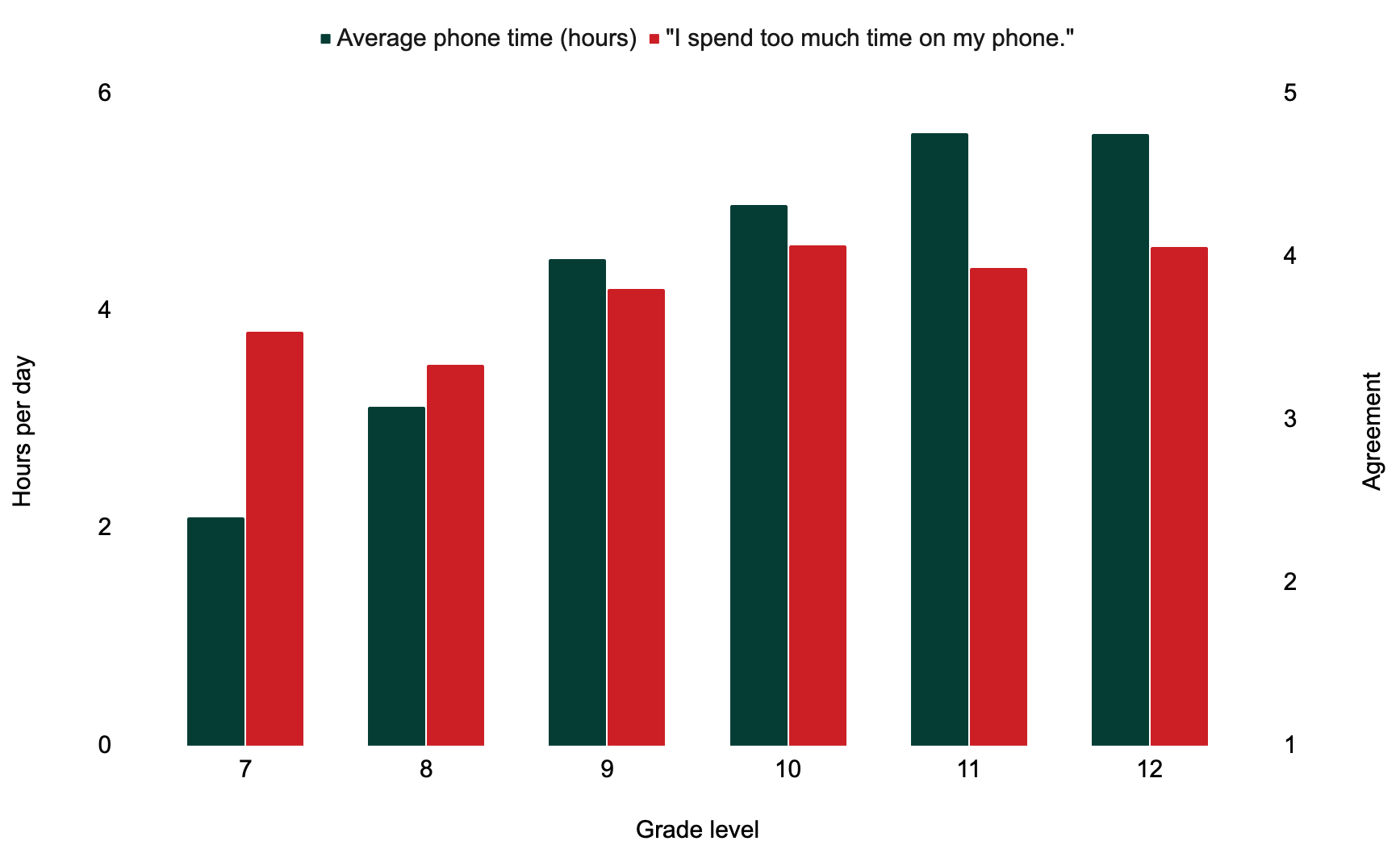
I asked a few additional Likert-scale questions, the responses to which I suspected might correlate with phone use, but results were very inconclusive. Yes, it would appear that our seniors could use more shuteye, but their average screen time was almost equivalent to that of our juniors, who reported higher levels of sleep satisfaction. In fact, the data revealed only a very mild correlation between screen time and sleeplessness, academic stress, and social/relationship stress. Respecting the last of these, it would appear to be good news relative to the CDC’s recent revelations about adolescent mental health that, at least among students who responded to my survey, the statement „I often feel stressed about my relationships with other people” registers an average response of “neither agree nor disagree” across grades 7-12. I would emphasize again, however, that this “snapshot” poll was by no means a statistically valid assessment, and I am very interested in exploring with my MICDS colleagues opportunities to monitor student wellbeing to ensure that we are “off trend” relative to the more disquieting disclosures of the Youth Risk Behavior Survey report. Nevertheless, I am very grateful to the 183 Middle and Upper School students who took the time to share their information and perspectives with me this week.
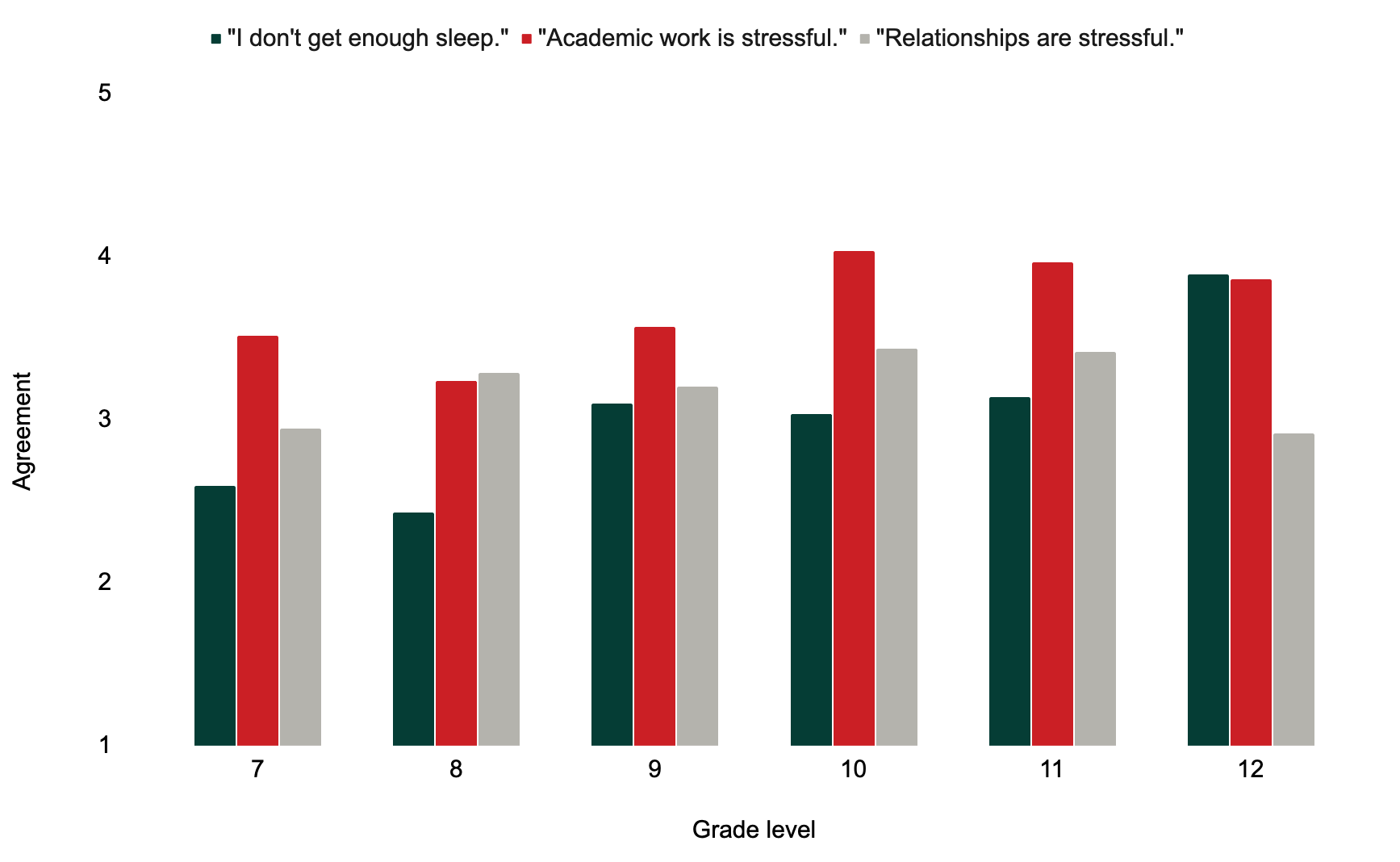
The world confronts its children with challenges old and new. We must forever strive to be equal to them. Always reason, always compassion, always courage. My best wishes to you and your families for a happy weekend.
Jay Rainey
Head of School
